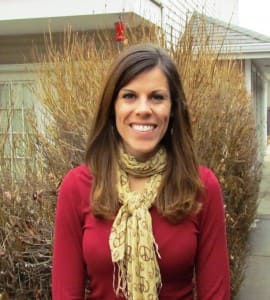
 We know about the danger of putting people into boxes. We have been trained not to say, “Women are emotional” because that stereotype leads to sexism. We know not to say, “Asian people are the best at math and science” because while statistics may suggest that, that statement is not true of every Asian person. Moreover, math and science aptitude is for the most part achieved, rather than attributed some biological trait. Undeniably, stereotyping leads us down a road of closed-mindedness, animosity, and social conflict as it fails to recognize the uniqueness of an individual personally, socially, and spiritually.
We know about the danger of putting people into boxes. We have been trained not to say, “Women are emotional” because that stereotype leads to sexism. We know not to say, “Asian people are the best at math and science” because while statistics may suggest that, that statement is not true of every Asian person. Moreover, math and science aptitude is for the most part achieved, rather than attributed some biological trait. Undeniably, stereotyping leads us down a road of closed-mindedness, animosity, and social conflict as it fails to recognize the uniqueness of an individual personally, socially, and spiritually.
Most of us have recognized that prejudices are based in societal portrayals of different groups, and that education and consciousness are necessary for understanding the complexity of any individual. Still, I have noticed that in some Enneagram circles, we still seem to put people into neatly packaged boxes without cause or concern for over-generalization. I fear that this Ennea–typing – holding prejudices of someone based on his or her perceived Enneagram type – could lead us down the same dark path led by sexism, racism, and the like.
I am a sociologist, which means that my entire career is dedicated to busting stereotypes and promoting social acceptance by recognizing the strengths in each person and people group. Yet early in my Enneagram studies, I failed to recognize the Enneagram’s slippery slope toward over-generalization. Indeed, my fascination with the tool has allowed me understand groups of people and their behaviors in a new light, but it is easy to categorize people in very narrow ways, leading to blanket statements about nine types of individuals.
The following personal story might shed light on how potentially destructive Ennea-typing can be:
I have dated a few “sevens” in my life. As a six, this was particularly problematic, since I was looking for security, stability, and commitment, whereas sevens seem to prefer multiple options, opportunities, and freedom. Unfortunately, I did not come across the Enneagram until later in my adult life and recognized the seemingly inherent contradictions in this partnership.
My friends, educated in the Enneagram primarily through my obsessive ranting, began to associate “sevens” as vindictive flakes that were “out to get” good, honest people (like their good friend, Stacy). Whenever they would hear of a crime, a nasty break-up, a manipulative colleague, or a troublesome student, they would tell me, “S/he is probably a seven.”
Then one day it hit me: I had become a typist. Not only were my perceptions and opinions of different numbers effecting any potential positive relationships I would have with people, I was broadcasting negative images to my friends, even if my friends didn’t fully understand the extent of what each Enneagram personality meant. Moreover, being a six, I used my knowledge to protect me from any potentially bad relationships (romantic or otherwise) based on my perception of their Enneagram type. Steering away from any relationships from sevens, I am sure I missed the opportunity to connect with some amazing people.
I believe that we can see sociological themes develop within each personality type. In terms of careers, for example, there may be more threes in business than another number. There may be more eights as lawyers than nines. There may be more fours in the arts and humanities than ones. Nonetheless, one of the reasons I was drawn to the Enneagram is its fluid nature of association, depending on our level of health, our wings, our subtypes, and so on. This allows for much more variation and growth than another personality typology of which I am aware.
That said, I still believe strongly in the power of association and so hope to construct a study that will examine the cross section of the Enneagram with broader sociological themes (e.g. Gender and Enneagram types: are there really more women “Helpers” than men?). Even still, sociologists who study social trends scientifically get excited when a trait or a pattern is true just fifty percent of the time. The intention to examine some of these trends is not to pigeonhole, stereotype, or promote typist behavior among our community. Rather, I believe that by identifying the trends found within each type – if any – will also allow us recognize the vast diversity equally represented within each Enneagram type. For as any good social psychologist, Enneagramist, or open-minded individual would say, with each person comes his or her own personality, experiences, resources, and cultures that is unique to no one else.

